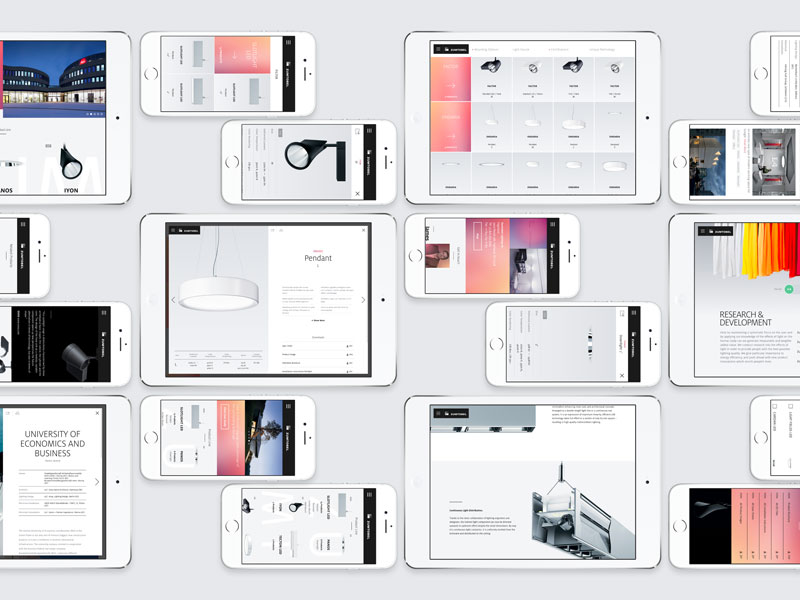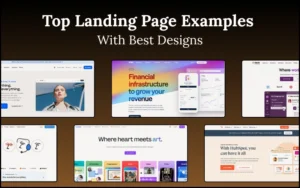One of the biggest web-design dilemmas running on the mobile web is whether such thing actually exists. On the one hand, mobile devices require fundamentally different websites, but on the other hand, it might be that there is only one Web and we use different devices to access it. In this blog, we will understand the importance of mobile site vs responsive site.
There are many companies that support the first theory, and build separate mobile optimized sites before they’ve even gone online altogether. They believe that the difference in how people use websites on different devices is very important, but that’s actually far from the truth.
Phones nowadays have so powerful screens and resolutions that they make everything on the website perfectly visible, and there is no need for the company to build a separate mobile site vs responsive that could be used on all devices.
Let’s check some of the most important reasons why you have to use mobile responsive website instead of separate ones:

Table of contents
- Mobile Site vs Responsive Site: You Will Pay Less
- You Are Not Compromising User Experience Of Mobile Responsive Website
- You’re Risking Losing Communication Between Sites
- Mobile Site vs Responsive Site : You Will Weaken The SEO Authority
- You Will Confuse Your Users
- You Will Annoy Users By Redirecting Them To Irrelevant Pages
- Failing To Meet Users’ Expectations
Mobile Site vs Responsive Site: You Will Pay Less

Development and maintenance costs are reason number one for you to let go of the idea for creating mobile-specific sites. If nothing else, you will have to run two similar websites at the same time, and that won’t exactly cut operation costs and maintenance fees.
You should also have in mind the need for additional resources, because mobile specific sites use different coding and databases that their conventional counterparts.
Besides, assume that there will be a new device on the market to which your mobile website is not able to respond. Where would that take you? A responsive website, on the other hand, will allow customers to access your product from literally every device.

Finally, responsive design cuts outlay costs for web design, and completely eliminates the need for designing mobile vs responsive website. At the same time, you’re cutting human efforts for optimizing and updating, and you’re making your presence on social media much more effective and valuable.
You Are Not Compromising User Experience Of Mobile Responsive Website
Is your social presence as strong as you need it to be and why not? Most probably, it is because you’re starting and you need more information for developing a proper social media strategy. In case you’re running your site for some time already, you have a much worse problem: it means that your website doesn’t display the way it should when accessed from different devices.

Businesses understood from the very beginning that social media is priceless for sharing content. Mobile-designed websites, however, make links less pretty when sharing them with desktop users, as they have to scroll sideways to see the desktop site.
In most of the cases, users are so annoyed by it that they navigate to a completely different website, regardless of how compelling the content is.
Also read: Mobile Web Navigation: Best Practices
You’re Risking Losing Communication Between Sites

When you’re designing a mobile-specific website, you’re automatically making the communication between desktop and mobile users less streamlined.
Practically explained, this means that the links mobile users share from the website will only be accessible to desktop users in a reduced version, where images will be tiny, and the layout is obviously too wide for the content to be properly displayed. The same happens in the opposite case, when desktop users are trying to send links to mobile users.
Check out this blog to learn about best practices for website design.
Mobile Site vs Responsive Site : You Will Weaken The SEO Authority
As you probably know, SEO is an amazing tool which improves your website’s rankings, and gives your brand the attention and availability it deserves.

Still, having two URLs for the same website confuses every SEO authority. It is all because people simply don’t have the habit to relate content with canonical tags while indexing. If nothing else, two URLs make the website more difficult to find, and that affects traffic more than anything else.
What Google hates the most is duplicated content, and penalizes users that do that. Owning two similar websites poses the risk of having the exact same content displayed twice on the search engine, and that can easily be misinterpreted by Google.
Also read: The Key Elements Of Mobile UX

Google recommends responsive web design for mobile configuration, and it is exactly because there will be only one URL with the same HTML code to be used on all devices. Google will discover, organize, and index content much easier, and will make it significantly simpler to share, link, or distribute.
You may think this is not so important at the beginning, but yielding to Google as the leading search engine and paying attention to their preferences is the only way to maximize SEO and page ranks, and to be popular among users.
You Will Confuse Your Users

This is quite self-explanatory: the more different content you display to users, the more confused they will become. The consequences can be really costly. Because the worst thing that can happen to every website owner is to frustrate users even after spending so much to accommodate every one of them.
Also read: Designing For Mobile UX – Best Practices
You Will Annoy Users By Redirecting Them To Irrelevant Pages
Let us be more precise about this: when users try to access the website from their mobile devices, they’re being automatically redirected to the m-dot and mobile version of the website. When you own more than a single website and you don’t respect Google’s best practices. This can be more of a problem than a helpful circumstance.

In most cases, mobile users get to see only certain pages if the website is on Google instead of the homepage. Once they try to open it and it loads, they’re being redirected to the m-dot version. But they see only those pages that actually have a mobile version.
If your homepage is not properly mobile-optimized, users will see only 404 error pages, or a badly displayed desktop version. To be completely honest, this is not something Google likes to see. It may happen that the engine will reject your content as being ‘irrelevant’.
Also read: The Best Practices For Mobile Typography
Failing To Meet Users’ Expectations
Don’t take the trendy mobile web design as a reason to create two separate websites. Especially not when you know what responsive designs are capable of. Don’t lose focus from mobile users and let them access a high quality website from all devices instead of having to surpass the gap between two versions.
That’s how internet is—it is currently undergoing a macro-shift in paradigm. All basic means of communication are changing, and everything depends on what users want and need. The more able you are to respond to their needs, the more traffic you will drive to your website. That’s exactly where the key to your success lies.
Like this post? Check out more amazing web design content here.




